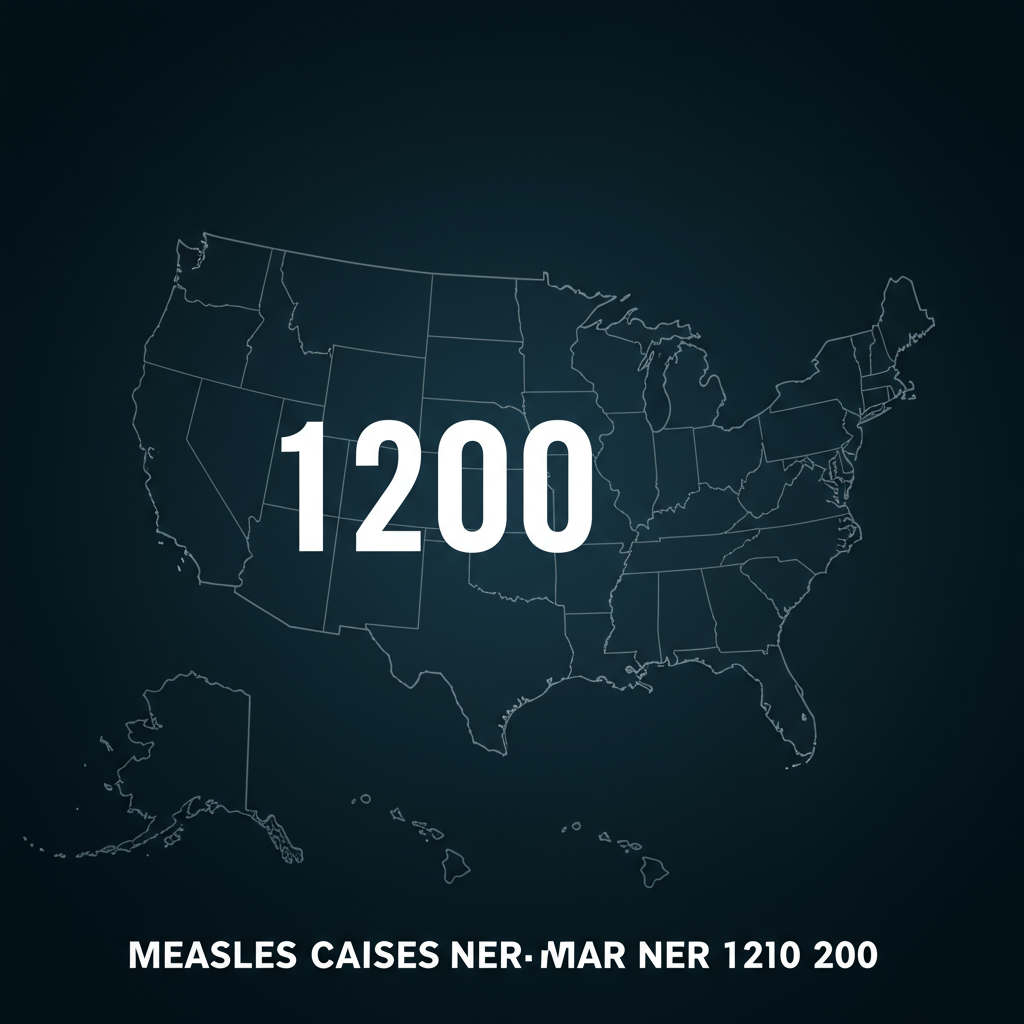The United States is experiencing a significant resurgence of measles, with the national case count for the year now approaching 1,200. While this alarming figure underscores the virus’s persistent spread, there’s some positive news as health officials in Ohio have declared three local outbreaks officially over.
According to data from the Centers for CDC, the U.S. has recorded a total of 1,197 confirmed measles cases this year. Encouragingly, fewer than 30 new cases were logged nationwide in the past week. The announcement from Ohio health officials that three outbreaks in two counties have concluded follows similar good news earlier this year when outbreaks in Indiana, Michigan, and Pennsylvania were also declared over, and Tennessee’s outbreak appears to have ended.
Key Outbreaks Still Active Across the US
Despite these resolutions, several other states continue to battle active measles outbreaks, defined by the CDC as three or more related cases. These include:
Arizona
Colorado
Illinois
Kansas
Montana
New Mexico
North Dakota
Oklahoma
Additionally, many other states have reported individual cases throughout the year, highlighting the widespread nature of the virus’s presence.
Texas Remains the Epicenter
The most substantial outbreak in the U.S. this year has been concentrated in Texas. The state has documented 744 cases across 35 counties, predominantly in the western part of the state. This surge has led to 96 hospitalizations statewide. A significant majority – 55% – of Texas’s cases stem from Gaines County, where the outbreak originated in a close-knit community with low vaccination rates, accounting for 411 cases since late January.
Tragic Loss of Life
The human cost of these outbreaks is tragically evident. Three individuals in the U.S. have died from measles-related complications this year. These include two elementary school-aged children in West Texas and an unvaccinated adult in New Mexico. Both Texas children were unvaccinated. The 8-year-old child who died in April reportedly had no underlying health conditions and succumbed to “measles pulmonary failure.” The unvaccinated New Mexico adult who died in March did not seek medical care.
Measles: Highly Contagious and Preventable
Measles is caused by a highly contagious virus that spreads easily through the air when an infected person breathes, coughs, or sneezes. It was considered eliminated in the U.S. in 2000, a public health achievement largely attributed to widespread vaccination.
The Measles, Mumps, and Rubella (MMR) vaccine is a safe and highly effective tool against the disease. The standard recommendation is for children to receive their first dose between 12 and 15 months old, followed by a second dose between ages 4 and 6.
Understanding Herd Immunity
Preventing large outbreaks relies on achieving herd immunity, which occurs when a high percentage of a community is vaccinated (typically over 95%). This collective protection helps prevent the virus from spreading easily, safeguarding vulnerable individuals who cannot be vaccinated, such as infants too young to receive the vaccine or those with compromised immune systems.
However, national data shows a concerning trend: childhood vaccination rates have declined since the COVID-19 pandemic, and more parents are seeking exemptions for required shots. This decrease in vaccine coverage creates pockets of vulnerability where measles can readily spread, as seen in recent outbreaks.
Symptoms and Severe Complications
Initial measles symptoms often resemble a cold, including a high fever (potentially exceeding 104°F), runny nose, cough, and red, watery eyes. The hallmark measles rash, characterized by flat red spots, typically appears three to five days after symptoms begin, starting on the face and spreading down the body.
While many people recover, measles is not a benign illness. It can lead to severe and potentially life-threatening complications such as pneumonia, blindness, brain swelling (encephalitis), and death. There is no specific treatment for measles; medical care focuses on supportive measures to alleviate symptoms and prevent complications.
International Context
The rise in U.S. cases is connected to outbreaks occurring globally. Major measles epidemics are also impacting other North American countries, including Ontario, Canada (over 2,000 cases with one death), Alberta, Canada (nearly 900 cases), and Chihuahua, Mexico (over 2,100 cases with four deaths). U.S. cases and outbreaks are frequently traced back to international travel, particularly involving unvaccinated Americans returning from areas experiencing measles surges. The CDC has noted a significant increase in cases originating from outside the U.S. compared to previous years.
The ongoing measles activity across the country and the continent serves as a critical reminder of the importance of maintaining high vaccination rates to protect communities from this serious, yet preventable, disease.




